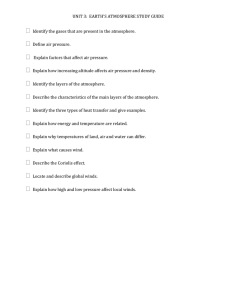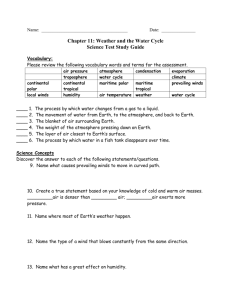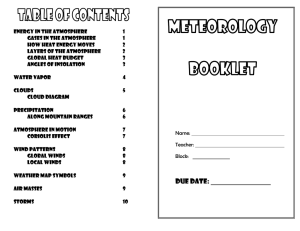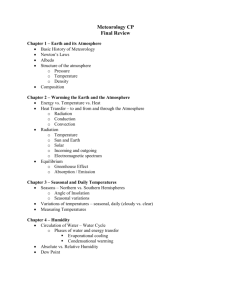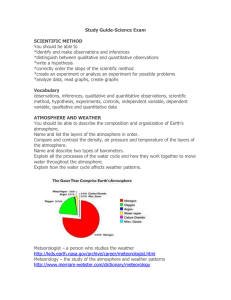Test Rain Rain Go away
advertisement
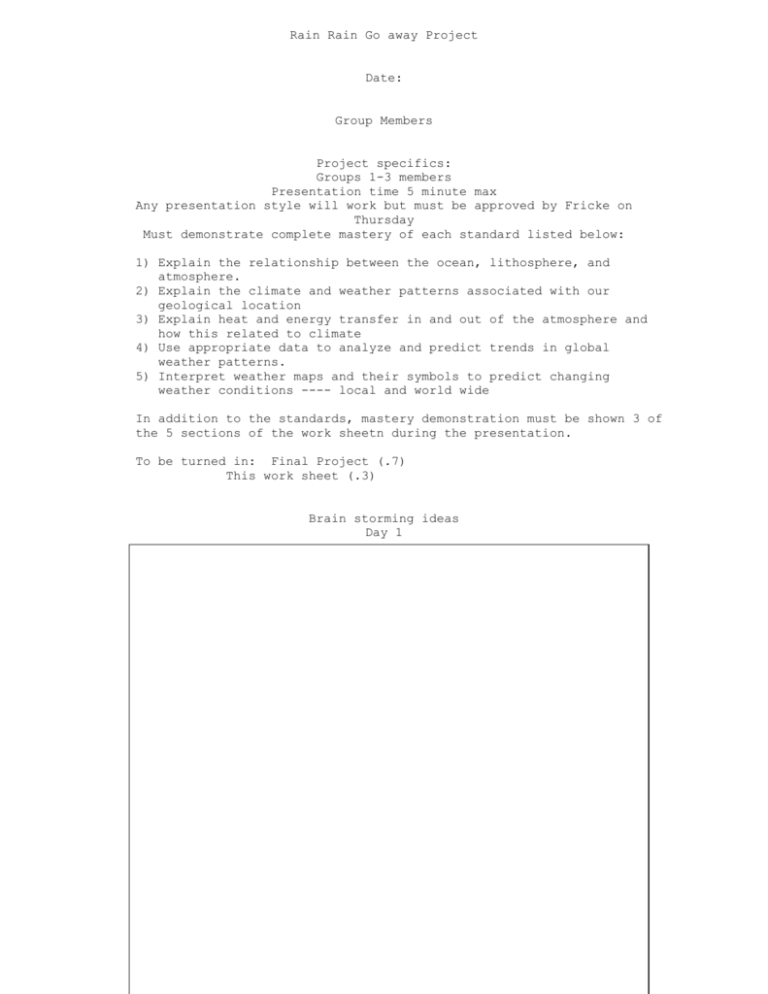
Rain Rain Go away Project Date: Group Members Project specifics: Groups 1-3 members Presentation time 5 minute max Any presentation style will work but must be approved by Fricke on Thursday Must demonstrate complete mastery of each standard listed below: 1) Explain the relationship between the ocean, lithosphere, and atmosphere. 2) Explain the climate and weather patterns associated with our geological location 3) Explain heat and energy transfer in and out of the atmosphere and how this related to climate 4) Use appropriate data to analyze and predict trends in global weather patterns. 5) Interpret weather maps and their symbols to predict changing weather conditions ---- local and world wide In addition to the standards, mastery demonstration must be shown 3 of the 5 sections of the work sheetn during the presentation. To be turned in: Final Project (.7) This work sheet (.3) Brain storming ideas Day 1 What did you do today, day 1? Plan for tomorrow, day 2 Date What did you do today, day 2? Plan for the weekend, in addition to completing the worksheets attached. Date What did you do today, day 3? Plan for tomorrow. Are you ready to present? The following must be completed and turned in by Tuesday before you present your topic. This whole worksheet is to be completed for a foundation of knowledge. Mastery of 3 of the 5 sections must be shown in presentation on Tuesday. Section1: Tell me 2 things about the following terms: 1. Coriolis effect 2. Troposphere 3. Stratosphere 4. Latent heat 5. Sea breeze 6. Continental climate 7. El Nino 8. Green house effect Section 2 9. Label the following chart Composition of the Atmosphere Label each % (Must have 3 sections) 10. Label the following chart Layers of the atmosphere Must include the following: a. Label each layer b. Depth of each layer c. 2 features from each 11. Describe what happens the actual number of gas molecules as the height above Earth’s surface increases and why this occurs? (3 pts) Section 3 12. Describe each of the following types of wind: a. Westerlies b. Sub polar lows c. Jet streams c. Trade winds 13. A maritime air mass is likely to be ______? 14. Weather fronts describe ______? 15. What does a cold front look like? (Describe or draw – must be labeled correctly) Section Four 16. Describe each of the following terms: a. Hydrosphere b. Atmosphere c. Lithosphere d. Biosphere 17. What is the primary factor that determines climate at a particular location? Name all 3 classifications. (4pts) 18. Oceans are generally warmer than land in the summer, why? 19. The burning of fossil fuels contributes to global warming, why? 20. Why to clouds increases nighttime temperatures? Section 5 21. Explain and draw the Coriolis effect. 22. Why does San Francisco have a maritime climate and Boston a continental climate? 23. Explain the cause of pressure differences and resulting winds?
